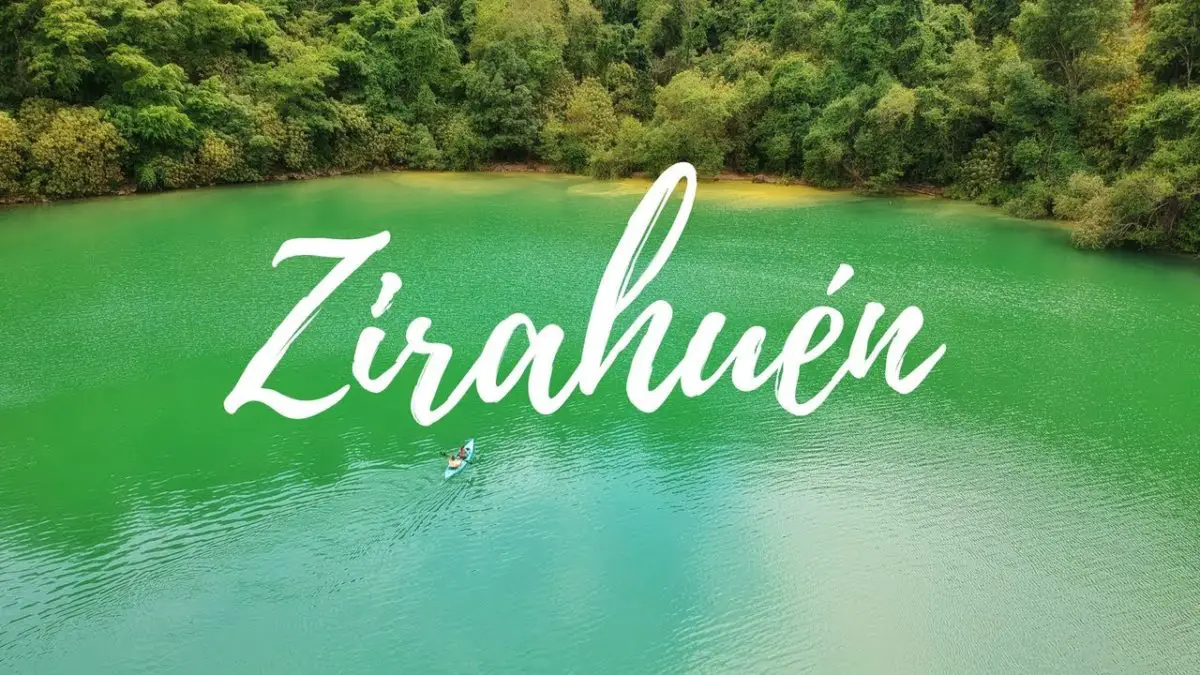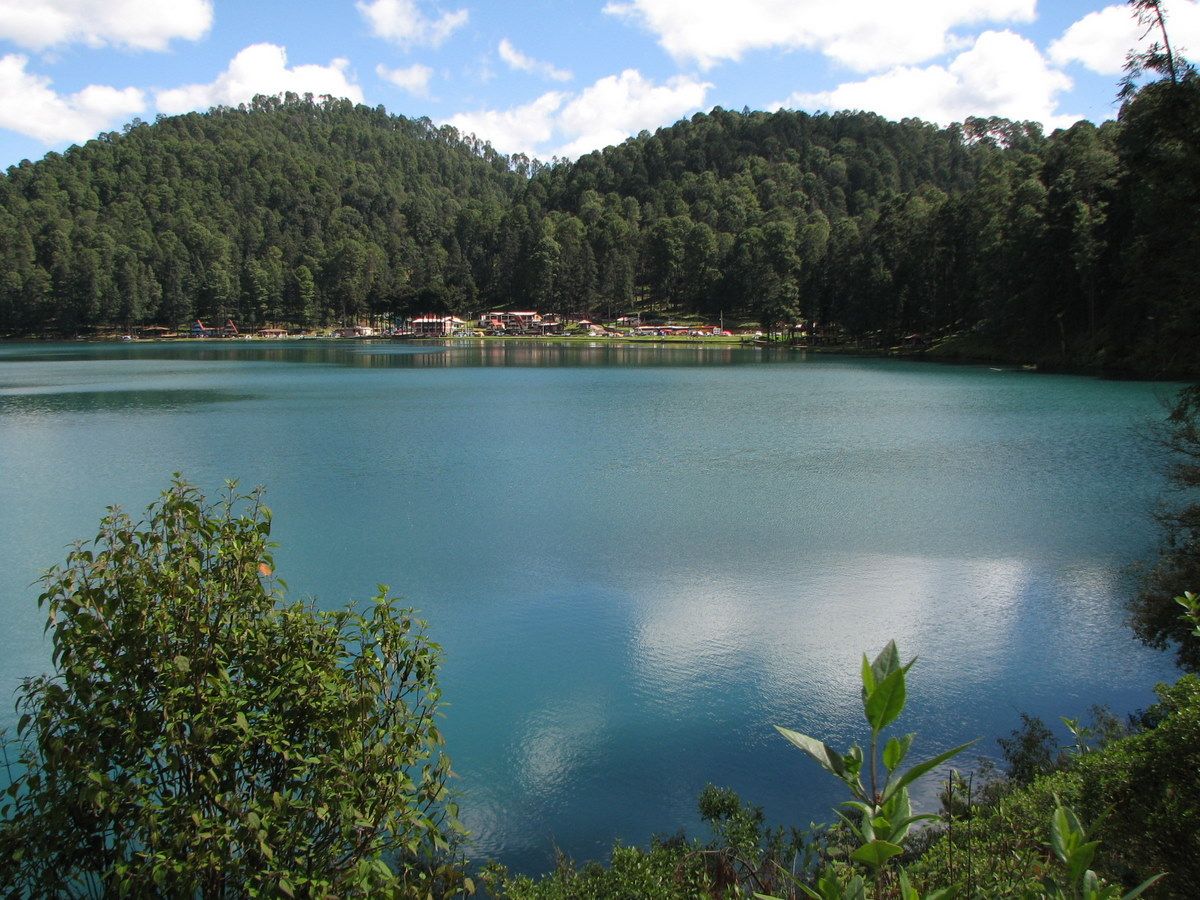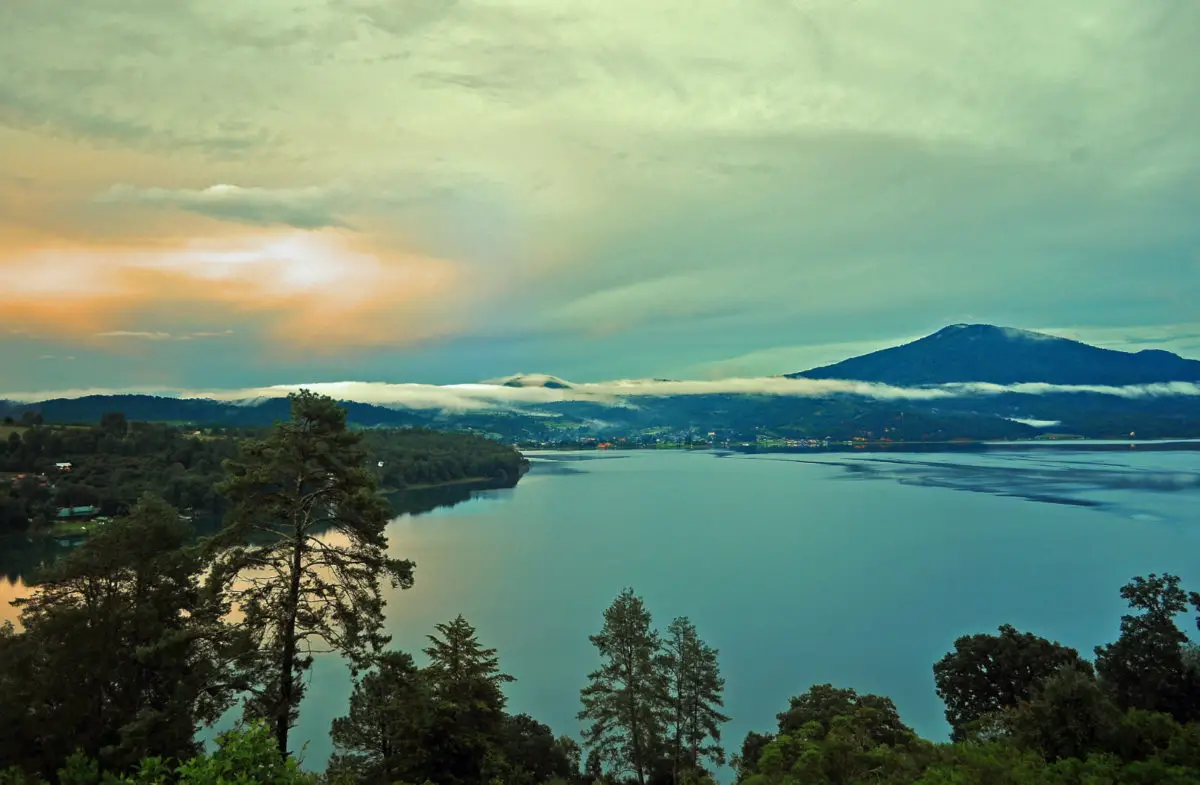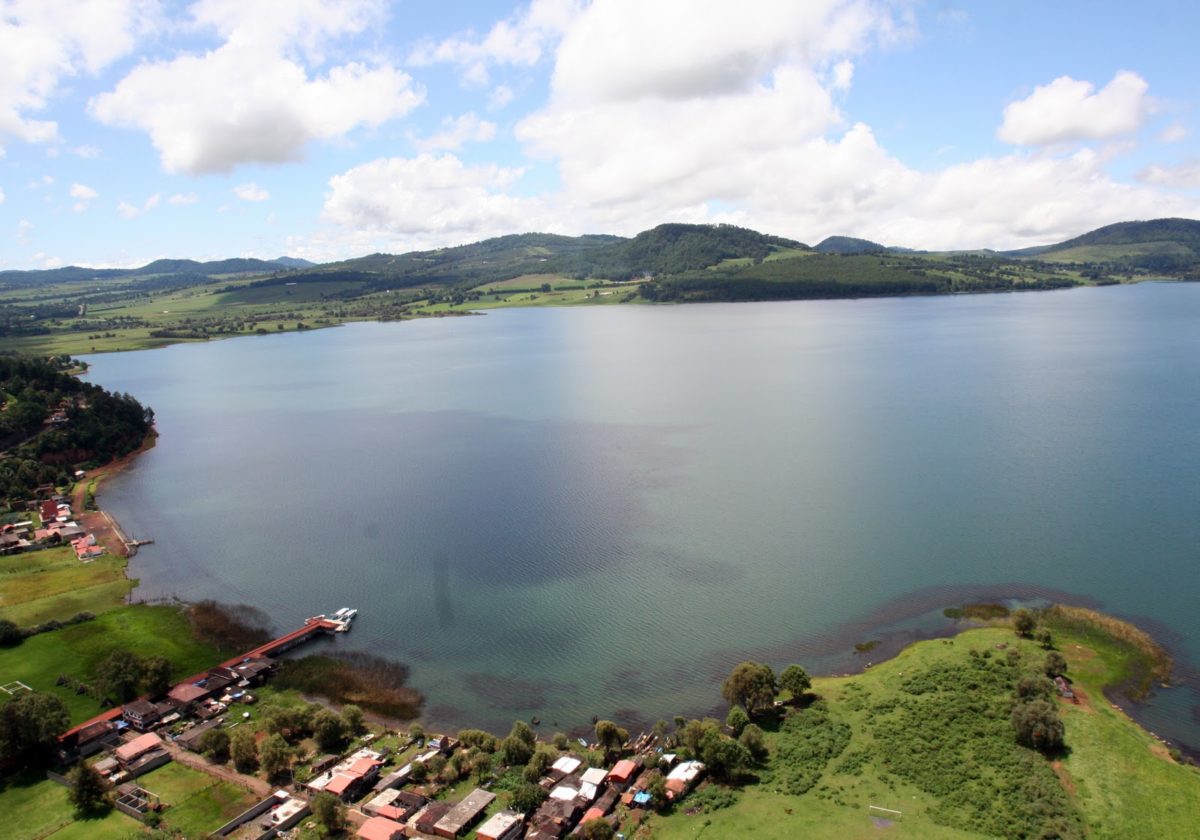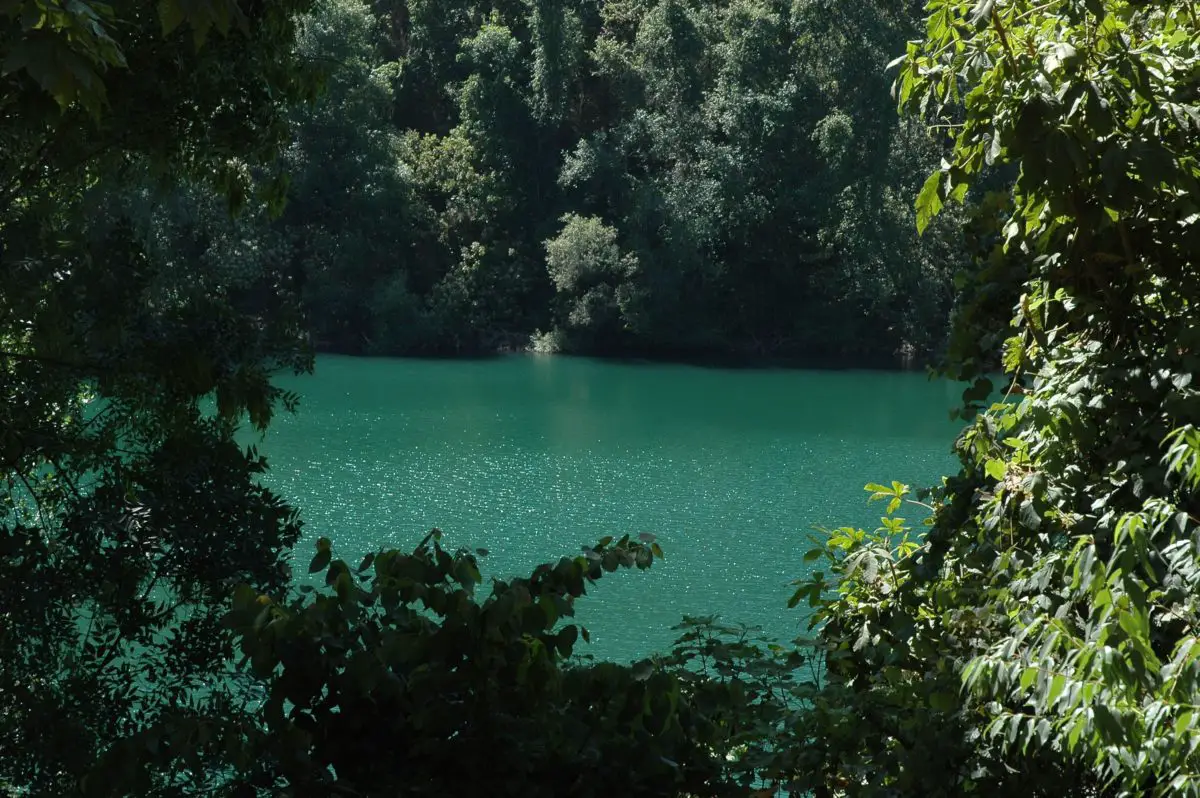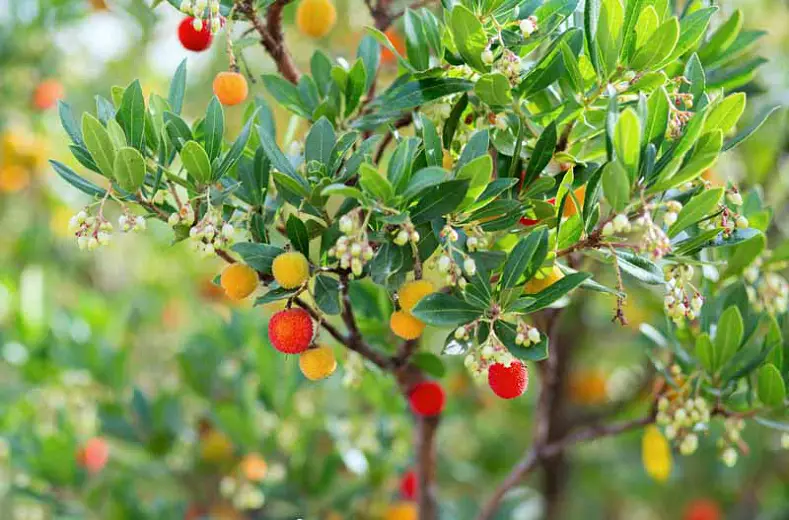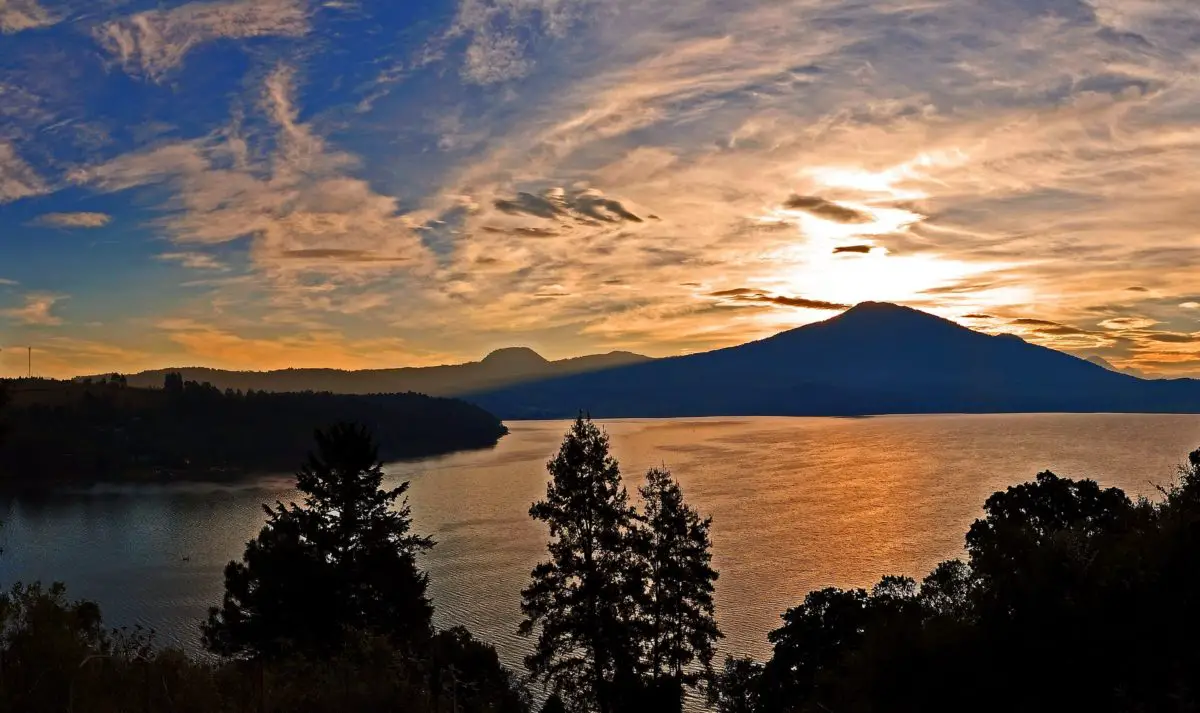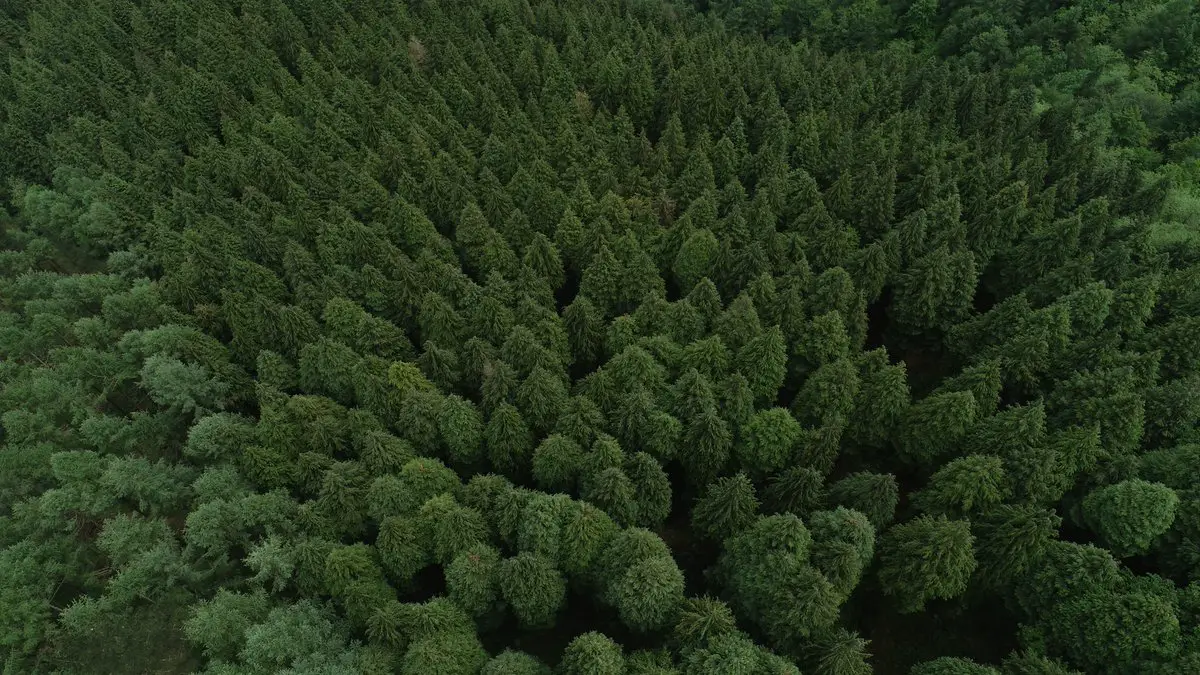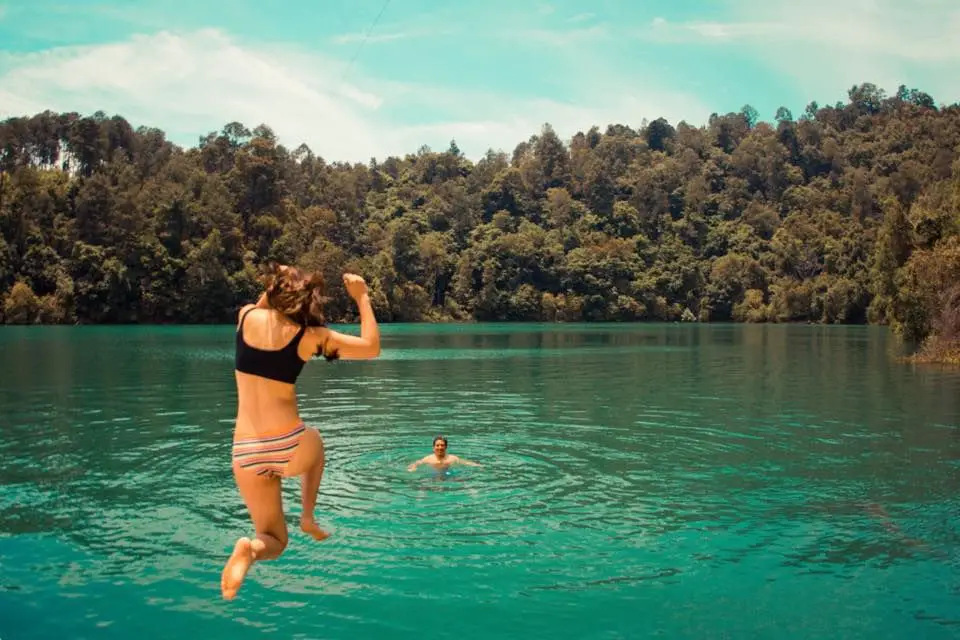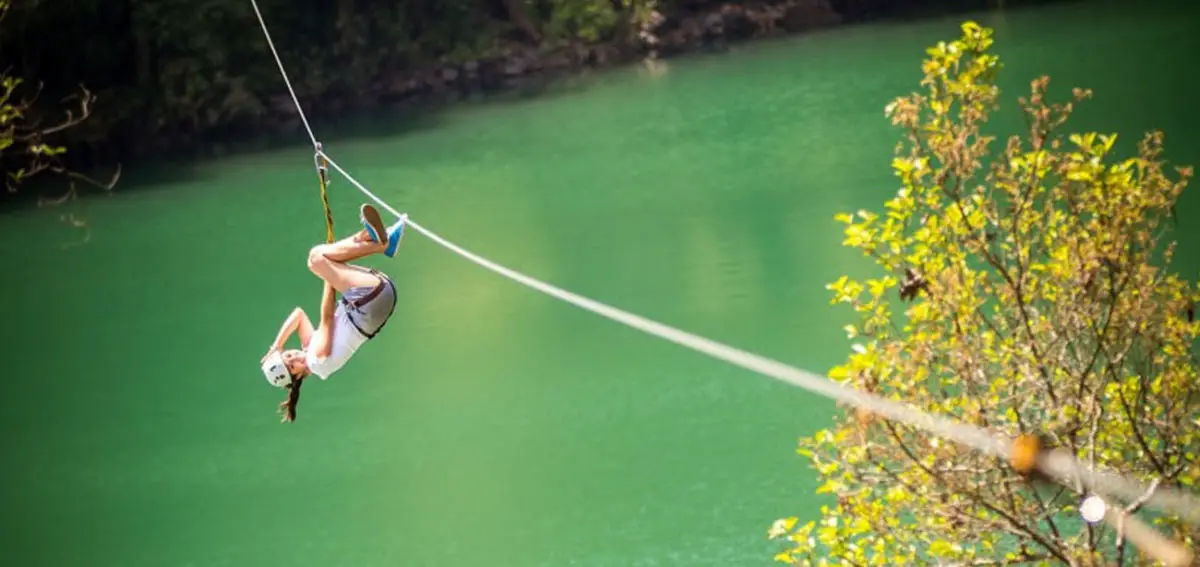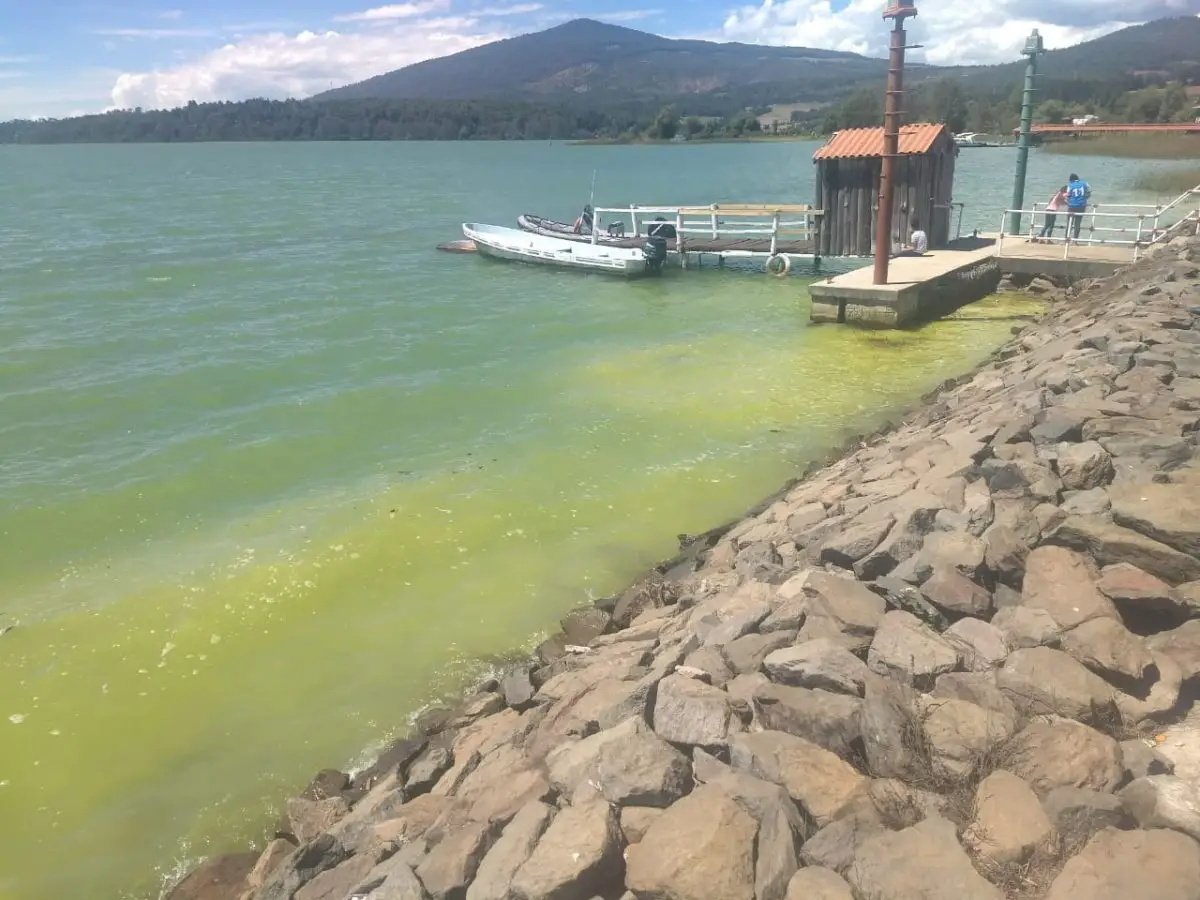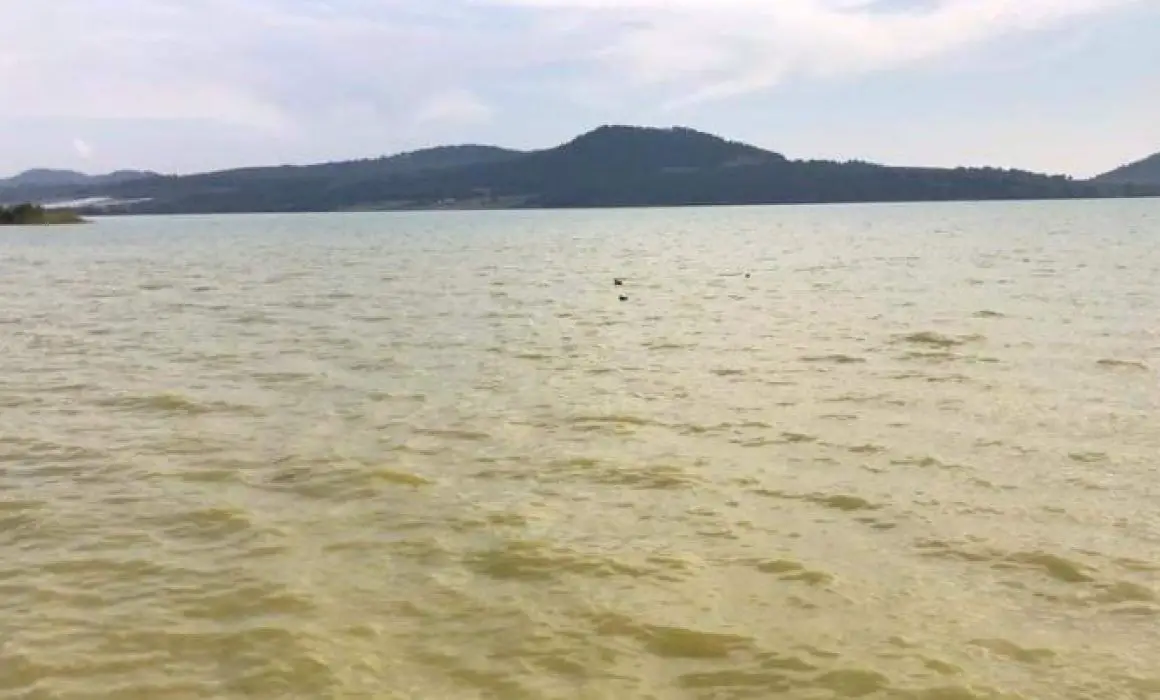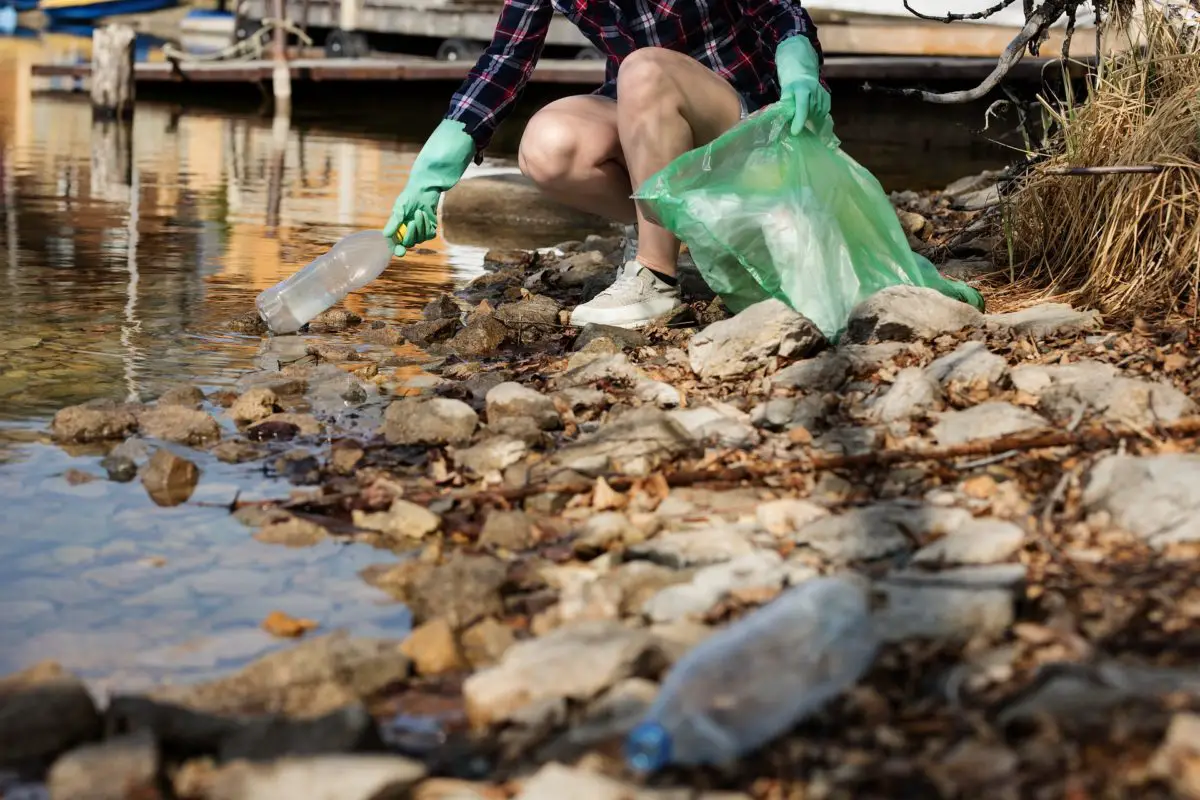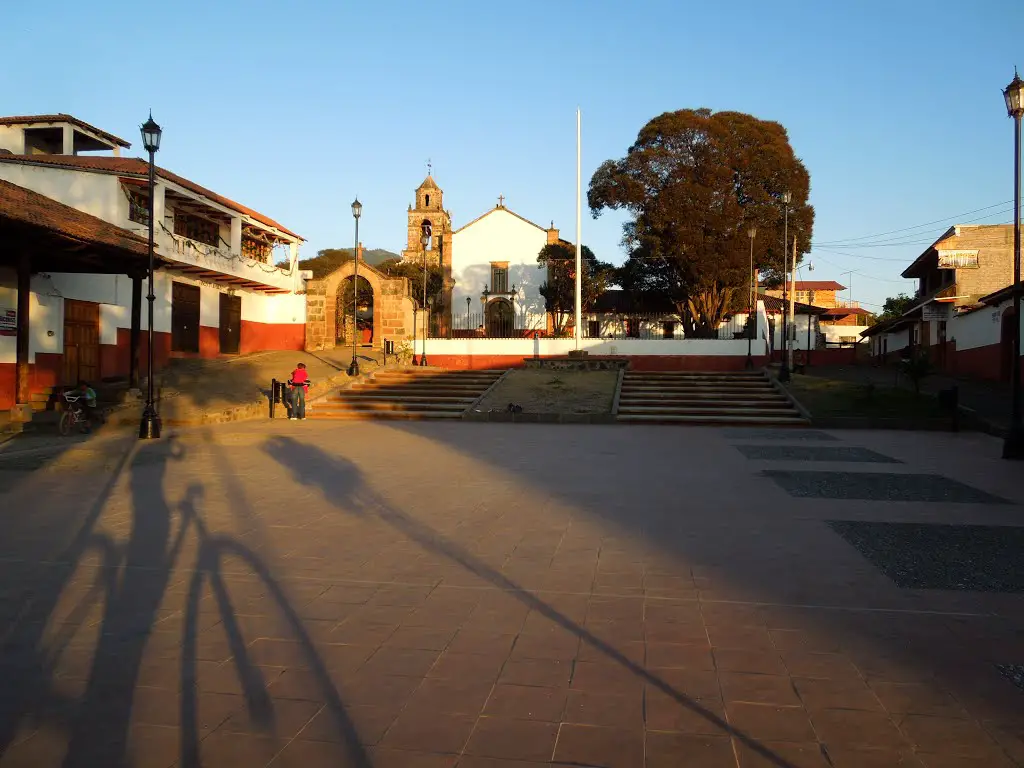Lake Zirahuén evaporates on its surface all the water it collects from its hydrographic basin, which defines it as endorheic, it is located in the municipality of Salvador Escalante, within the state of Michoacán in Mexico. Discover all the information about this small Mexican lake, including its history, characteristics, flora, fauna, legends and much more, don’t miss it.
Indice De Contenido
Location of Lake Zirahuén
Lake Zirahuén, also known as Lake Zirahuén, is located in the municipality of Salvador Escalante, in the state of Michoacán, Mexico.
The lake has been identified with this name due to the town that is located in its northern part (Zirahuén), but it is usually called Mirror of the Gods by the locals, because it is a place of particular beauty, surrounded by pine and oak forests, where it also shares space with the lakes of Pátzcuaro and Cuitzeo, located in the Tarasco Corridor.
It is a lake of great tourist wealth, due to the fact that a series of water sports are practised in its waters. However, like many other lakes, its origin is shrouded in legend, according to which a Spaniard, madly in love with a local Purepecha woman, kidnapped her and hid her in a mountain valley.
The young woman cried so much that she created the lake in which she eventually submerged and became a mermaid; to this day, locals who believe in the legend say that it is possible that this mythical figure can be found in the waters of Lake Zirahuén.
Lake Zirahuén is located in the central region of Michoacán and forms part of its lake system. The main road is paved and starts from Patzcuaro in the direction of the city of Uruapan, then turns south for 17 kilometres and continues for another 5 kilometres to the town of Zirahuén.
The other road, which is less frequented, is covered with stones and can be found from Santa Clara del Cobre. This access road was built by local people, who charge a fee to use it in order to recoup their investment. This road can be recognised by the copper bust of General Lázaro Cárdenas, President of Mexico from 1934 to 1940, at its entrance.
Its history
The origin of Lake Zirahuén is considered to be of tectonic volcanic origin, whose depression was created by the structural movements of the relief due to volcanic action, creating faults, folds and basins.
The history of the life of this lake is closely linked to the Aztec empire, whose transcendence within the great Tenochtitlan, succumbed to the power of the Spanish conquistadors in the year 1521, who had firearms with which they dominated all the aborigines of the place.
Each of these indigenous cultures of the Michoacan region was gradually subjugated by the Spaniards, especially in the centre of this territory, which was considered a paradise among lakes and mountains that captured the attention of these conquerors.
This Michoacan territory was inhabited by the Tarascans or Purépecha, a dominant culture that imposed its hegemony over the entire area until the arrival of the Spanish conquistadors, who succeeded in forcing Zuanga, the last of the Purépecha rulers, to submit to the orders of King Carlos I. This led to the construction of the first towns, monasteries and mines in Angangueo.
This led to the construction of the first towns, monasteries and mines in Angangueo, as well as the development of agriculture and cattle raising in the area. This is how the towns on the shores of Lake Zirahuén, now located in the municipality of Salvador Escalante in the state of Michoacán, came into being.
It is the town of Zirahuén that gives its name to this lake, which has two docks, cabins and restaurants where you can taste trout, white fish and the typical dried charales (fish), as well as the exquisite quesadillas stuffed with pumpkin blossoms. All this has marked the history of this lake, one of the most representative in the state of Michoacán.
Characteristics of the lake
Lake Zirahuén stands out from the rest of the region’s water bodies because of its particular characteristics, which give it an impressive beauty and make it an important natural ecosystem for all the species living in the area. Each of these features is described in more detail below:
- It is a lake located in the Neovolcanic Tarascan Subprovince, where other lakes such as Patzcuaro and Cuitzeo are located. It is characterised by its volcano-tectonic origin and its endorheic basin, which means that its waters do not flow into the ocean, but remain in place and are only modified by evaporation or infiltration.
- It is a quadrangular lake that extends for more than 4 kilometres and has a depth of 40 metres, precisely in its central part, at an altitude of 2,080 metres above sea level.
It is framed by a closed basin surrounded by high mountains and has fairly steep banks. - To the north is a plain where the town of Zirahuén was founded, also surrounded by hills.
- Both the lake and the village that gives it its name are surrounded by dense forests of pine, oak and arbutus, a shrub that produces fruit with interesting nutritional properties.
- The forest is best preserved on the south-western shore of the lake, as it is further away from the population living on the shores. This makes it one of the most beautiful parts of Lake Zirahuén.
- The south-western corner of the lake has high, sloping slopes covered with lush vegetation, giving it a jungle-like appearance and a canyon-like shape.
- The lake is known as a green corner because of the colour of its crystalline water, which reflects the dense foliage of the surrounding vegetation, but also because of a series of vegetable pigments dissolved in its water content, caused by the decomposition of the leaves.
- It has isolated areas where some huts have been built, which are rented out to tourists or visitors who wish to make a spiritual retreat or simply contemplate its paradisiacal setting, full of natural beauty, where the only noise is the sound of the wind between the trees or the soft singing of the birds.
- There are also many paths that cross the woods or border the lake, where you can walk and enjoy the natural scent of the trees and the many plants that live parasitically on them, such as the bromeliads that the locals call gallitos.
- A special feature of this place are the orchids, which are brightly coloured and whose nectar is eaten by hummingbirds. These exotic flowers are highly prized as they are used in the Day of the Dead celebrations.
- The main access to the lake is by boat, with a jetty where it is also possible to swim, since the water is crystal clear, while in other areas of its shores the water is muddy and shallow, with the presence of reeds and other aquatic plants that make it unsuitable for swimming.
- A large part of the Zirahuén Lake shore is in the hands of a single owner, who has built his retreat there, known as the Casa Grande, a two-storey wooden hut with old regional handicrafts.
- On the shores of the lake there are also a number of wooden huts where fishermen live, with high poles on which they hang their nets to dry after their daily work.
- A fairly common activity is for the locals to bathe their horses on the banks of the lake, or for women to use its waters to wash their clothes, which unfortunately leaves residues of detergents and chemical products in this body of water, which are toxic and cause its contamination.
https://www.youtube.com/watch?v=6qnPld85boM
Flora and fauna
Lake Zirahuén has an aquatic flora and vegetation represented by 35 families, 55 genera and 93 species. It should be noted that in the basin of the lake there are coniferous, holm oak, mountain mesophyll and aquatic vegetation, but of all these types of vegetation, the most extensive are the coniferous and holm oak forests.
Among the rooted hydrophilous species, Nymphaea odorata and Nymphoides fallax stand out, characterised by floating leaves, rooted to the ground and with reproductive organs above the leaves; examples of this type of flora can be found in the south and south-east of the lake.
Among the tree species of the mesophyll forest that develop on the shores of the lake, we can mention Alnus acuminata and Salix bonplandiana, which are characterised by being partially submerged for about three months during the rainy season.
The conifers are evergreen, represented by species such as Abies religiosa, Pinus Lawsoni, Pino Oocarpa, Pinus Leiophylla and Pinus Pseudostrobus.
There are also leafy species, such as the Aile, Madroño, Encino, Palo de Barranco, Palo cuchara and the Cirimo, scientifically identified as Tilia Mexicana, which is in danger of extinction.
It is interesting to note that the pine tree is one of the most abundant trees around Lake Zirahuén and is also used to make one-piece carved boats.
To do this, the fishermen hollow out the pine tree and make oars with rounded paddles, creating artistic canoes that are exciting to sail, although it should be noted that they are difficult to keep balanced and capsize at the slightest movement of their occupants. However, the fishermen are very skilled and can even paddle them standing up.
Another species that makes up the flora of this lake is the strawberry tree, a tree of great ornamental interest, with beautiful flowers and fruits that remain green almost all year round, turning colourful in autumn and winter. The species is scientifically known as Arbutus Unedo and can grow up to seven metres high, with a reddish trunk covered in greyish scales.
Its exquisite berry-shaped fruit is initially yellow to orange in colour, but when it reaches maturity it turns an intense red colour and takes up to a year to ripen, so it sometimes has flowers and fruit at the same time.
Some liqueurs are made from the fruit of the strawberry tree and are used in confectionery, but they are not very tasty, although they have many medicinal properties, such as anti-inflammatory, anti-rheumatic and diuretic.
As far as the fauna is concerned, there are mainly five native species, scientifically identified as Chirostoma estor copandaro (white fish), Chirostoma attenuatum zirahuen (charales fish), Allophorus robustus (native fish), Goodea atripinnis (native fish) and Neoophorus diazi (bony fish).
The species Micropterus salmoides, Oncorhynchus mykiss and Cyprinus carpio, representative of these fish species, have also been introduced into the lake in order to find their place in this body of water.
Lake Zirahuén is also home to other species representative of the area, such as skunks, marsupials, coyotes, hares, deer, flying squirrels, raccoons, weasels, pigeons, moorhens, crying pheasants, turtle doves, hummingbirds, chachalacas and cuaresmeño ducks, among others.
The climate
The climate of the region where Lake Zirahuén is located is mainly classified as sub-humid temperate, with rainfall in the summer. In winter, rainfall is less than 5%.
This place has an average annual rainfall of 1,182.6 mm, which makes it representative of a humid or sub-humid ecosystem, with abundant rainfall.
The average annual temperature is estimated to be between 12°C and 23°C, characteristic of a mountain climate, but in winter it can reach temperatures below freezing.
Your oak-pine forest
Pines are trees with strong, rough trunks, generally found in the northern hemisphere, and their wood is very profitable both industrially and commercially. The holm oak is a tree of medium size, belonging to the Fagaceae family, which can be bushy depending on the conditions or pluviometric characteristics of the terrain in which it grows.
In this sense, pine-oak forests are considered to be mixed in the mountains, as is generally the case in the Sierra Madre de México, where both plant species occur in a balanced way. In the higher areas, such as the peaks of the Sierra, the pine trees can reach a height of 25 metres, while in regions such as the foothills and lower parts of the mountains there are holm oak forests, whose specimens can reach a height of 7 metres.
Depending on their geographical location, these forests are classified as temperate, as they develop in a generally cold mountain climate, which can be below freezing in winter.
It is a rather humid type of ecosystem, with annual rainfall of between 600 and 1000 mm, and is generally located at an altitude of up to 3000 metres above sea level, with abundant rainfall almost all year round.
The story of Princess Eréndira
In this region of central Michoacán lived the princess Cándida Eréndira, the daughter of the Purepecha or indigenous king of Tangáxhuan. But one of the Spanish soldiers fell madly in love with her, and one dark night he came to her quarters and kidnapped her, taking her to a hidden place where he kept her prisoner.
This young girl, known as Eréndira, whose name means Morning Laughter in the Purépecha language, did not stop crying for a moment, begging all her gods to save her from the hands of the conquering foreigner who held her captive.
This was heard by Father Sun, known as Tata Juriata, and Mother Moon, known as Jarátanga, who, after listening to her prayers and pleas, allowed the young indigenous girl to use her tears to create an enormous, uncontrollable torrent of crystalline water that formed Lake Zirahuén, which is why it is called the Mirror of the Gods in the Purepecha language.
It is said that the young girl could not escape from the rock in the middle of the lake, so the gods took pity on her and turned her legs into the tail of a fish.
Thus the princess became a mermaid and escaped from the Spaniard, ending her suffering. According to the legend, the mermaid still swims in the waters of Lake Zirahuén and, just before dawn, she raises her head to the surface to enchant all men with bad hearts and take them away as punishment.
Zirahuén Forest Park and Resort
The Zirahuén Forest Park and Resort is a tourist complex located on the shores of Lake Zirahuén, characterised by its location in the Michoacan Forest, among many pine trees and lush vegetation, with incomparable views of the lake, which serve as a frame for this place created for tourist purposes.
It is a park that has been divided into three sections to be known, as follows:
- Zirahuén, which has a restaurant serving typical regional cuisine, cabins for eight people and a quay from which the catamaran or boat that makes the official tour of the entire lake departs, as well as shops selling handicrafts and other attractions.
- La Troje de Ala, which is another restaurant, but dedicated to both regional and international cuisine, and even a combination of the two.
- The Agua Verde section, with alpine huts, residential chalets and the Parque Aventura, a tourist attraction with two impressive cableways, each over 350 metres long, with suspension bridges.
One of the best times to visit this park is in spring, before the rainy season begins, or after the cold season at the end of March, although its climate is considered quite mild.
Considered a park where fun, the presence of nature and the culture of the people of Michoacán come together, the Zirahuén Forest and Resort allows you to discover and get to know all the beauty of this lake in a fun way, through the implementation of a series of family activities, among which are the following:
- Horse riding or hiking are unforgettable excursions to discover the forest with its beautiful landscapes.
- Driving ATVs along different routes and taking amazing photographs to take home unforgettable memories of all the nature that the lake has to offer.
- Cycle through the mountains along the lake’s shores, where you can increase your speed and forget the asphalted roads, filling yourself with energy as you dodge obstacles and challenge all the slopes and gradients, filling your lungs with fresh air.
- Take a ride on one of the ziplines and enjoy a panoramic view over the most beautiful area of Agua Verde Bay, with a 45-minute ride that takes you to different heights.
The Franki zipline is 330 metres long and 50 metres high.
The Yuli zip line is 280 metres long and 20 metres high.
The Chiquita zip line is 80 metres long. - Other activities in the park include kayak tours, which take you through the calm waters of the entire Zirahuen Lake.
- There is also a paintball field for the sport of gotcha, which consists of shooting paintballs while running, which is also a great exercise.
What is a Tyrolean Traverse?
For those who do not know, the aerial tramway, also known as a zip line or canopy, is a device designed to move in the air between two points defined by towers that act as supports and stops to start the descent and to locate the arrival point at the end of the entire route.
Its mechanism consists of a pulley suspended by stainless steel ropes. The person is attached to the pulley by a harness, which moves along the length of the cable by gravity, as the ride starts at the top of the route and arrives at the end of the route, which is generally at a lower altitude.
The problem of pollution in Lake Zirahuén
As we have seen, the inhabitants of the regions surrounding Lake Zirahuén often use its waters to bathe their horses or wash their clothes on its shores, leaving behind a series of polluting chemicals, as well as an accumulation of non-biodegradable waste due to the ignorance of many visitors who throw it on its shores.
This is a latent pollution problem in Lake Zirahuén, due to the ignorance or negligence of the people and authorities in dealing with it. It seems that no measures have been taken to prevent this pollution from continuing.
Lake Zirahuén has been classified as monomictic, meaning that its waters mix once a year due to seasonal variations in temperature; oligotrophic, meaning that it lives on very low levels of nutrients; and finally endorheic, meaning that its waters are generally exposed to the evaporation that collects in its basin.
The basin of this lake is currently showing a series of signs of deterioration caused by the irrational exploitation of its resources, which requires urgent action by the Mexican authorities to promote its conservation in time.
Similarly, the soils of the Zirahuén basin are degraded, either by erosion, overgrazing or deforestation, as well as by illegal logging, fires, the presence of pests or forest diseases.
On the other hand, many of the region’s artisans use pine wood as fuel for smelting copper. As a result, the colour of the lake changes due to excessive algae blooms, which reduce its transparency and the existence of its underwater vegetation, which is the spawning habitat for its fish.
Every year this lake loses about 1.02 hectares of surface area due to pollution problems and its endorheic characteristics. It is also affected by the discharge of many effluents generated by the towns around its shores.
All this leads to environmental risks such as the deterioration of water quality, the alteration of aquatic life, health problems for the inhabitants, the extinction of the region’s own flora and fauna, and a significant reduction in the level of tourism in the lake.
Those who knew Lake Zirahuén ten years ago say that when they see it today, they do not recognise its environment, as its forests have been degraded because many of the communal lands have been privatised for the creation of tourist attractions, taking advantage of the lake’s benefits.
A recent report by a researcher at the Universidad Michoacana de San Nicolás de Hidalgo points out that the algae that pollute the lake do not pose a health risk to visitors, as they are below the average set by the World Health Organisation for drinking water.
However, it is not advisable to consume it, as it can cause liver problems due to the microcystin content of the algae, which can also cause skin irritation and neurotoxic effects.
At the moment, it is said that there is still time to save this beautiful lake, which is the heritage of all Michoacanos, with projects to build a treatment plant and to control the 650 tonnes of garbage that is generated in the urban centres each year.
Another aspect to be taken into account with regard to pollution is that the recent changes in land use for the introduction of avocado plantations have created significant ecological risks, so that certain controls must be carried out in order to avoid altering this landscape, which is visited for ecotourism purposes.
https://www.youtube.com/watch?v=q0RWJTcraNU
However, it is not advisable to consume it, as it can cause liver problems due to the microcystin content of the algae, which can also cause skin irritation and neurotoxic effects.
At the moment, it is said that there is still time to save this beautiful lake, which is the heritage of all Michoacanos, with projects to build a treatment plant and to control the 650 tonnes of garbage that is generated in the urban centres each year.
Another aspect to be taken into account with regard to pollution is that the recent changes in land use for the introduction of avocado plantations have created significant ecological risks, so that certain controls must be carried out in order to avoid altering this landscape, which is visited for ecotourism purposes.
This park has all the comforts for tourists to have accommodation, food and fun during their stay, with the opportunity to visit the Zirahuén Lake and take panoramic photographs during this tour to keep as a souvenir of their visit.
This is a place where tourists can rest in beautiful cabins in the forest and forget the stress and problems of everyday life, in an environment surrounded by pine and oak trees.
The lake is an hour’s drive from Morelia and, as mentioned above, the spring is warm, but the nights are quite chilly. Therefore, depending on the climate, it is best to visit between the months of February and June, when there is less rain and the cold of winter is not felt.
In summary, the reasons for visiting Lake Zirahuén can be summarised as follows:
- It has wonderful cabins where you can stay comfortably, in a place surrounded by pines and holm oaks.
- The views of the lake are breathtaking, unique creations of nature.
- There are many places to eat, including restaurants and stalls selling typical Mexican food prepared by the Michoacan women themselves.
- It has beautiful forests and a large adventure park known as Parque Zirahuén Forest and Resort.
- It is worth visiting the town, its people and all the legends that give life to the place, the architectural style of its buildings and the parish church dedicated to the Lord of Forgiveness, its streets, plaza and all the typical corners where you can buy handicrafts typical of the Purepecha culture.
We end our tour of the waters of Lake Zirahuén by inviting you to get to know it, as it is a wonderful gift of nature that should be admired and protected by all, as a legacy for future generations.
If you liked this article, we suggest you read the following topics:
- Lake Titicaca
- Lake Baikal
- Guadalete River
- Magdalena River

